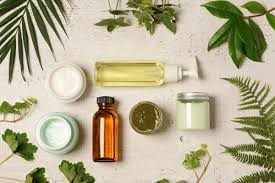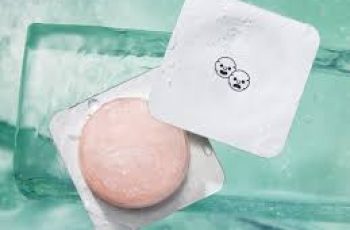
Chemical Acids in Skincare: Are They Really ‘Natural’ Ingredients?
When you think of skincare ingredients, terms like “chemical acid” might immediately raise a red flag.
They sound harsh, even dangerous, and seem like the exact opposite of what we should be applying to our skin to nourish and protect it.
However, the reality is a bit different. Many of the ingredients you might hear referred to as chemical acids, such as AHAs, BHAs, and PHAs, are actually derived from natural, plant-based sources.
In many cases, these acids have been used for centuries in skincare, and they offer a variety of skin benefits.
So, before we jump to conclusions, let’s take a closer look at what these acids are, how they work, and whether they can truly be considered “natural.”
The Confusion Around ‘Chemical’ and ‘Acid’ in Skincare
Let’s be clear: the terms “chemical” and “acid” in the world of skincare are often misunderstood.
Outside the beauty world, these words may conjure up images of harsh substances, dangerous reactions, or potentially harmful effects.
We typically think of chemicals as synthetic or industrial, and acids as corrosive substances that should be avoided.
But here’s the twist: In the context of skincare, the word “chemical” isn’t a villain—it’s just a way to describe a specific style of exfoliation.
When we refer to “chemical exfoliation,” we’re talking about using natural, biologically active substances to slough away dead skin cells and encourage cell turnover.
This is quite different from the traditional “physical exfoliation,” which involves abrasive scrubs or gritty particles that manually scrub away dead skin.
On the other hand, when we refer to acids in skincare, we’re talking about ingredients that have a specific molecular structure and a certain ability to interact with the skin.
These acids aren’t the kind of harsh, skin-damaging acids you’d find in industrial products. Instead, they’re carefully chosen for their skin-friendly properties.
What Are Chemical Acids in Skincare?
Chemical acids are active ingredients that work to improve the health and appearance of the skin.
They’re typically included in skincare formulas designed to target a variety of skin concerns, such as clogged pores, fine lines, uneven skin tone, and texture issues.
These acids help to exfoliate the skin by breaking down the bonds between dead skin cells, allowing them to shed and reveal a brighter, smoother complexion.
There are three primary types of chemical acids used in skincare: AHAs (Alpha Hydroxy Acids), BHAs (Beta Hydroxy Acids), and PHAs (Poly Hydroxy Acids).
Each type works a little differently, but they all share a similar goal: to exfoliate the skin and promote healthier skin turnover.
But what exactly makes these acids so effective?
Well, chemical acids are able to penetrate the skin at a deeper level than physical exfoliants, which means they can work more thoroughly to exfoliate the skin.
This deeper exfoliation is why chemical acids often produce more noticeable results in a shorter period of time compared to their physical counterparts.
The Science Behind Chemical Acids in Skincare
To fully understand how these acids work, we need to get a bit technical.
When we apply chemical acids to our skin, they interact with the top layers of skin cells by breaking down the bonds (known as “desmosomes”) that hold them together.
This process loosens dead skin cells, allowing them to shed more easily and making way for fresh, new cells underneath.
Now, you might be wondering: “Why do we need to exfoliate our skin this way? Isn’t exfoliation just for removing dead skin?” The answer lies in how our skin renews itself.
As we age, the natural process of skin cell turnover slows down, meaning dead skin cells can accumulate on the surface and leave our skin looking dull, uneven, and clogged.
By using chemical acids to exfoliate the skin, we help to accelerate this process and improve the overall appearance of our skin.
But here’s the catch: the strength and concentration of the acid, as well as your individual skin type, will influence how much change you see.
It’s important to remember that not all acids are created equal—what works for one person might not work for another.
Understanding the Terms: ‘Acid’ and ‘Chemical’
Let’s take a deeper look at the terminology involved. The word “acid” in the context of skincare isn’t just about a sour or pungent smell.
In scientific terms, an acid is any substance that can donate a proton (H+) to another substance.
This means acids have a unique ability to interact with other molecules, which is why they’re so effective in skincare.
As mentioned earlier, chemical acids used in skincare typically fall into the category of hydroxycarboxylic acids. These acids are named based on their molecular structure.
For example, alpha hydroxy acids (AHAs) have one carbon between the hydroxyl group (OH) and the carboxylic acid group (COOH).
Beta hydroxy acids (BHAs) have two carbons, while poly hydroxy acids (PHAs) have multiple hydroxyl groups attached to their structure.
So, when you see the term “acid” on a skincare product label, don’t be alarmed—it’s simply describing the molecular structure that allows the acid to interact with the skin.
How Chemical Acids Improve Skin Health
So, why should you use chemical acids in your skincare routine? Here’s the rundown on their benefits:
Exfoliation: The most obvious benefit of chemical acids is exfoliation. They help to remove dead skin cells, leaving the skin smoother, brighter, and more even in tone.
Improved Skin Texture: Regular use of chemical acids can improve the texture of your skin, reducing the appearance of rough patches, bumps, and clogged pores.
Even Skin Tone: Over time, chemical acids can help to fade dark spots, hyperpigmentation, and other discoloration, leaving the skin with a more even tone.
Fine Line Reduction: Chemical acids can promote collagen production, which helps to reduce the appearance of fine lines and wrinkles.
Clearer Skin: For those prone to acne, BHAs (like salicylic acid) can penetrate deep into the pores to unclog them, helping to prevent breakouts.
Where Do Chemical Acids Come From?
While the word “chemical” might make you think of lab-made ingredients, many of the acids used in skincare are derived from natural sources.
Here’s a breakdown of where some of the most common chemical acids come from:
AHAs (Alpha Hydroxy Acids): These acids are often derived from plant-based sources. Common natural sources include sugarcane, milk, and fruits like lemons, grapefruits, and tomatoes.
AHAs are best known for their ability to exfoliate the surface of the skin and are often used to brighten and smooth the skin.
BHAs (Beta Hydroxy Acids): BHAs are typically derived from willow bark, sweet birch, or wintergreen.
These acids are particularly effective for people with oily or acne-prone skin because they can penetrate the pores and help clear out excess oil and impurities.
They’re also found in certain fruits, such as berries, pineapple, and papaya.
PHAs (Poly Hydroxy Acids): PHAs are a newer class of acids that are generally derived from corn or potato.
They work similarly to AHAs but are less irritating to the skin, making them ideal for sensitive skin types. PHAs provide gentle exfoliation while also offering additional hydration benefits.
Are Chemical Acids Safe for Your Skin?
As with any active skincare ingredient, it’s important to use chemical acids responsibly.
When used correctly and in the right concentrations, chemical acids can be incredibly effective and safe for most skin types.
However, overuse or misuse can lead to irritation, redness, and increased sensitivity to the sun.
Always wear sunscreen when using products that contain chemical acids, and start with a patch test to ensure your skin can tolerate the product.
If you have sensitive skin, look for products with lower concentrations of acids or consider using PHAs, which are less likely to cause irritation.
Conclusion: Are Chemical Acids Still ‘Natural’?
Yes, chemical acids can still be considered “natural” in many ways.
Although they might sound intimidating due to the words “chemical” and “acid,” many of these ingredients are derived from plant-based sources, and they can provide numerous benefits for your skin.
Whether it’s AHAs for exfoliation, BHAs for acne prevention, or PHAs for sensitive skin, chemical acids are valuable tools in the skincare world.
So, the next time you see “chemical acid” on a product label, remember that these ingredients are far from harmful or synthetic—they’re nature’s secret weapons for healthy, glowing skin.


